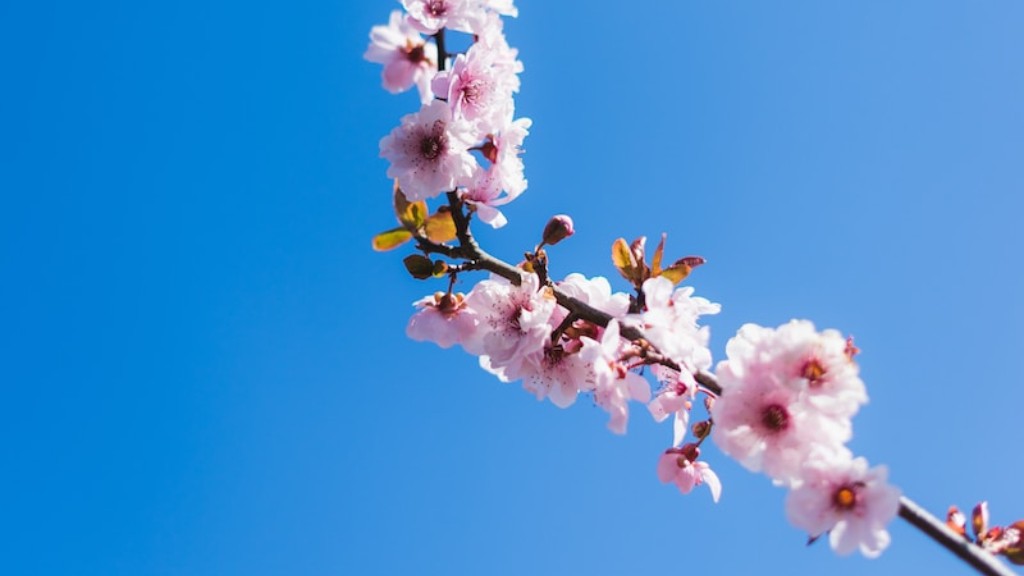Protecting your cherry tree from birds, pests, and other wildlife is essential in helping it to stay healthy. One of the most effective ways to protect your tree is to cover it with netting. This article will explain the basics of netting a cherry tree, as well as why it is important to do so, the types of netting available and the installation process.
Why Should You Cover Your Cherry Tree With Netting?
Covering your cherry tree with netting is important for a number of reasons. Firstly, it prevents birds and other animals from eating the cherries. Birds are especially fond of cherries, especially during their nesting season. Without protection, a cherry tree can quickly become stripped of its fruit. Secondly, netting helps to increase the amount of sunlight, air, and water that the tree receives. This increases the overall health of the tree and helps it to produce a higher yield of cherries.
Types of Netting Available
There are many different types of netting available for protecting your cherry tree. Depending on your budget, you may wish to go with a more expensive option such as a mesh netting with a tighter weave, or a more affordable option such as plastic mesh netting. Mesh netting is most effective, as it is more durable and can provide a better level of protection. Plastic mesh netting, although cheaper, may not provide as much protection and may need to be replaced more often.
How to Install Netting on a Cherry Tree
The installation of netting on a cherry tree is relatively simple, but can be a bit labour-intensive. The first step is to choose the type of netting that you would like to use and purchase it from your local garden centre or online. Once you have the netting, you will need to measure the size of the area that you want to cover and cut the netting to fit. Next, you will need to attach the netting to the tree, ensuring that it is stretched taut and secure. This can be done by tying the netting to the trunk or branches of the tree with string or wire. Finally, you will need to check that the netting is secure and there are no gaps or openings in which birds and other wildlife can enter.
Maintenance of Netting
Once the netting is installed on the tree, it is important to maintain it. During the growing season, the netting needs to be checked and tightened periodically, as it may become loose over time. If the netting becomes dirty, it can be wiped down with a damp cloth or gently washed in a mild detergent. Moreover, it is important to replace the netting periodically, as it can become brittle and loose its effectiveness over time.
Benefits of Covering Cherry Trees With Netting
Covering your cherry tree with netting can have many benefits. Firstly, it can help to protect your tree from pests and birds. Secondly, it can help to increase the amount of sunlight, water, and air that the tree receives, which can in turn increase the health of your tree and the yield of cherries that it produces.
Tips for Successful Netting
When it comes to covering a cherry tree with netting, there are some tips that can help ensure success. Firstly, always ensure that the netting is taut and not sagging, as this will ensure that birds and other wildlife can’t penetrate it. Secondly, it is important to inspect the netting regularly and replace it if necessary. Finally, make sure to always purchase high quality netting that is designed for outdoor use, as this will help to ensure longevity.
Netting Material Options
When it comes to netting material, there are a range of options available. Depending on your budget and the level of protection required, you could choose from mesh netting, plastic mesh netting, and UV-resistant plastic mesh. Mesh netting is the most effective and long-lasting, while plastic mesh netting is a cheaper option that may need to be replaced more regularly. UV-resistant plastic mesh is a good option if the netting needs to be exposed to direct sunlight, as it is more resistant to weathering.
Netting Attachment Methods
When it comes to attaching the netting to the tree, there are a number of different methods. The most common method is using string or wire to tie the netting to the trunk or branches of the tree. This can be tricky and time consuming, but is the most secure method. You could also use hooks or clips, but these may not be as sturdy and may need to be replaced more often. Alternatively, you could use Velcro straps that are specifically designed for use with netting.
The Importance of Pruning
When it comes to protecting your cherry tree with netting, it is also important to remember the importance of pruning. Pruning helps to ensure that the tree does not become overgrown and can help to keep pests and birds away from the cherries. However, it is important to make sure that you prune your tree correctly, as incorrect pruning can damage the tree and reduce its yield.
Caring for Your Cherry Tree
In addition to netting and pruning your tree, there are a number of other things that you can do to help care for your cherry tree. Firstly, it is important to make sure that the tree is well-watered, as this will help to ensure that the cherries remain juicy and flavoursome. Moreover, make sure to provide the tree with a steady supply of fertiliser, as this will help to ensure that it is healthy and produces a high yield of cherries.

